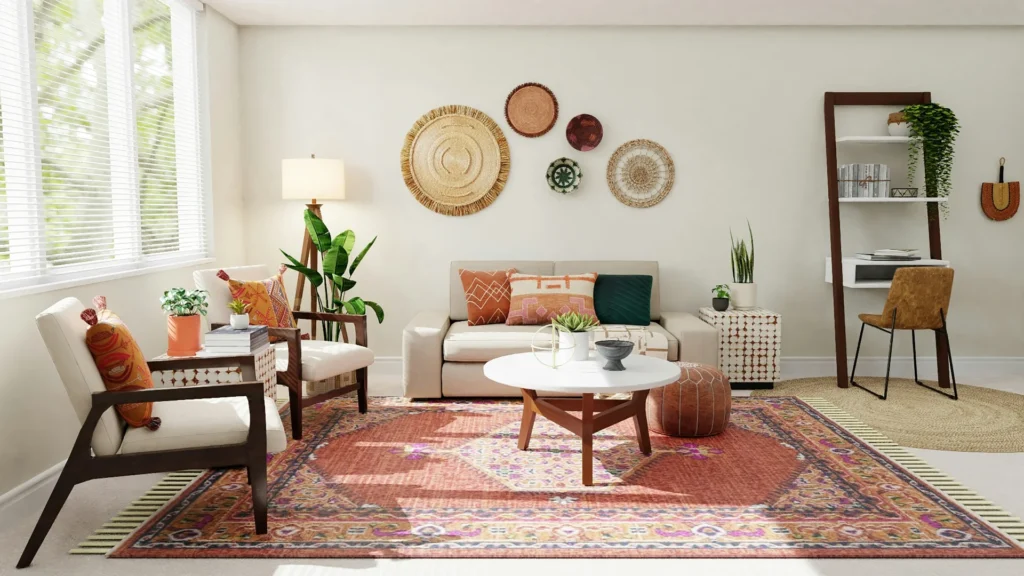
How to Choose the Perfect Area Rug for Your Space by best interior designer in rajkot hashtag design studio by best interior designer in rajkot hashtag design studio by Hashtagdesignstudio
Selecting the perfect area rug can transform your living space, adding warmth, style, and comfort. However, with so many options available, choosing the right rug can be overwhelming. This comprehensive guide will walk you through the essential considerations, from size and material to color and placement, to help you find the perfect area rug for your space.
Visit our portfolio at Best Interior Design to see how we incorporate area rugs into various spaces.
1. Determine the Rug Size
One of the most crucial factors in choosing an area rug is selecting the right size. The size of the rug can significantly impact the overall look and feel of the room. Here are some guidelines to help you determine the appropriate rug size for different spaces:
Living Room:
- Large Room: For large living rooms, consider a rug that covers the entire seating area. All furniture legs should be on the rug, creating a cohesive look.
- Medium Room: In medium-sized living rooms, place the front legs of the sofa and chairs on the rug, with the back legs off. This creates a defined seating area.
- Small Room: For smaller living rooms, choose a rug that sits in front of the sofa, with all furniture legs off the rug. This creates an accent piece without overwhelming the space.
Dining Room:
- Ensure the rug is large enough to accommodate the dining table and chairs, even when the chairs are pulled out. A good rule of thumb is to add at least 24 inches to each side of the table.
Bedroom:
- For a cohesive look, place the rug under the bed, extending at least 18-24 inches beyond the bed on all sides. Alternatively, use runners on each side of the bed for added comfort.
Entryway:
- Choose a rug that fits the dimensions of the entryway, leaving a few inches of space between the rug and the walls.
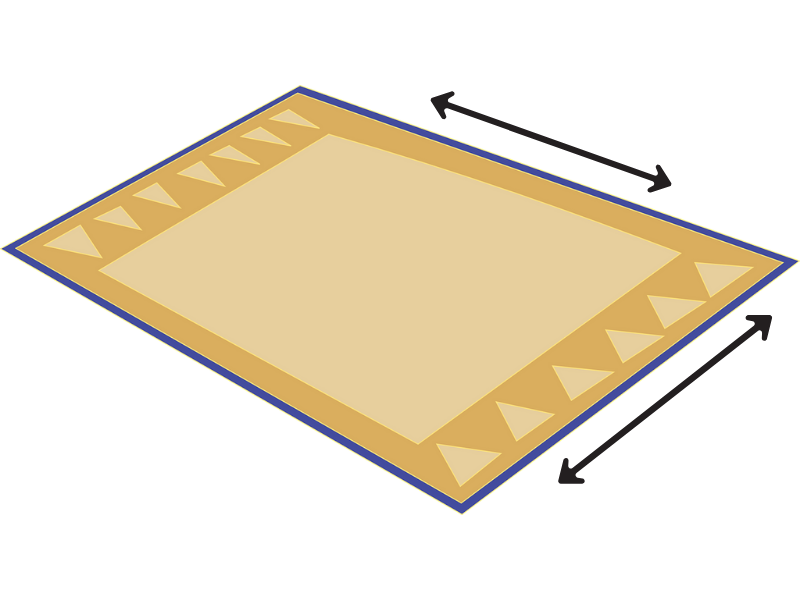
For more tips on sizing and placement, visit our referral blog on Creating Zones with Area Rugs.
2. Consider the Rug Material
The material of the rug affects its durability, feel, and maintenance. Here are some common rug materials and their characteristics:
Wool:
- Durability: Wool rugs are durable and long-lasting, making them ideal for high-traffic areas.
- Feel: Soft and plush underfoot.
- Maintenance: Stain-resistant and easy to clean.
Cotton:
- Durability: Less durable than wool but still suitable for low-traffic areas.
- Feel: Soft and lightweight.
- Maintenance: Easy to clean and often machine washable.
Synthetic (Nylon, Polyester, Polypropylene):
- Durability: Highly durable and resistant to stains and fading.
- Feel: Varies depending on the type but generally soft.
- Maintenance: Low maintenance and easy to clean.
Jute and Sisal:
- Durability: Durable and suitable for high-traffic areas.
- Feel: Natural and textured, but can be rough underfoot.
- Maintenance: Can be challenging to clean and not suitable for humid areas.
Silk:
- Durability: Delicate and best suited for low-traffic areas.
- Feel: Luxurious and soft with a subtle sheen.
- Maintenance: Requires professional cleaning.
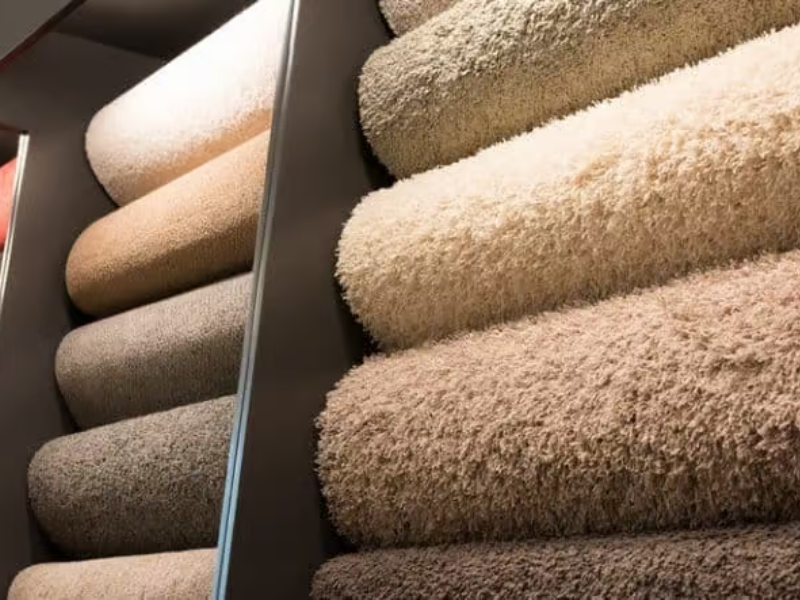
For more insights on rug materials, visit our referral blog on Choosing the Right Rug Material.
3. Choose the Right Rug Style
The style of the rug should complement the overall design and decor of the room. Here are some popular rug styles to consider:
Traditional:
- Features classic patterns like floral, medallion, and oriental designs.
- Adds elegance and sophistication to the room.
- Works well in formal and traditional settings.
Modern/Contemporary:
- Features clean lines, geometric patterns, and bold colors.
- Adds a sleek and stylish look to the room.
- Works well in modern and contemporary settings.
Transitional:
- Combines elements of traditional and modern styles.
- Features updated versions of classic patterns with a contemporary twist.
- Works well in a variety of settings.
Bohemian:
- Features vibrant colors, eclectic patterns, and a mix of textures.
- Adds a relaxed and artistic vibe to the room.
- Works well in bohemian and eclectic settings.
Shag:
- Features a deep, plush pile for a luxurious feel.
- Adds warmth and comfort to the room.
- Works well in cozy and casual settings.
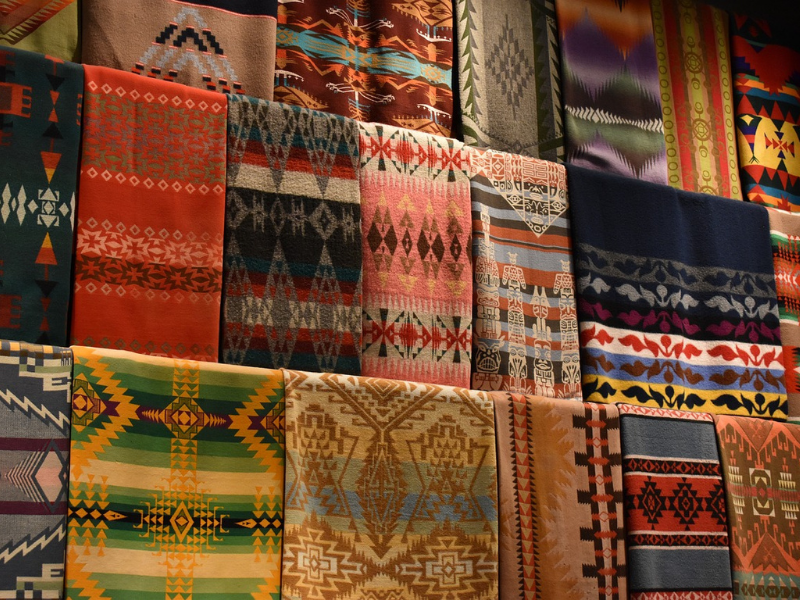
Discover more rug styles visit our referral blog on Exploring Different Rug Styles.
4. Select the Color and Pattern
The color and pattern of the rug can significantly impact the overall aesthetic of the room. Consider the following factors when choosing the color and pattern:
Color:
- Neutral Colors: Neutral colors like beige, gray, and ivory create a versatile and timeless look. They work well in any setting and complement various color schemes.
- Bold Colors: Bold colors like red, blue, and green add a pop of color and make a statement. They work well in rooms with neutral walls and furniture.
- Multicolored: Multicolored rugs add visual interest and can tie together different elements of the room.
Pattern:
- Solid: Solid rugs create a simple and clean look. They work well in rooms with busy patterns or vibrant colors.
- Geometric: Geometric patterns add a modern and contemporary touch. They work well in modern and transitional settings.
- Floral: Floral patterns add a touch of elegance and sophistication. They work well in traditional and bohemian settings.
- Abstract: Abstract patterns add an artistic and unique touch. They work well in eclectic and contemporary settings.
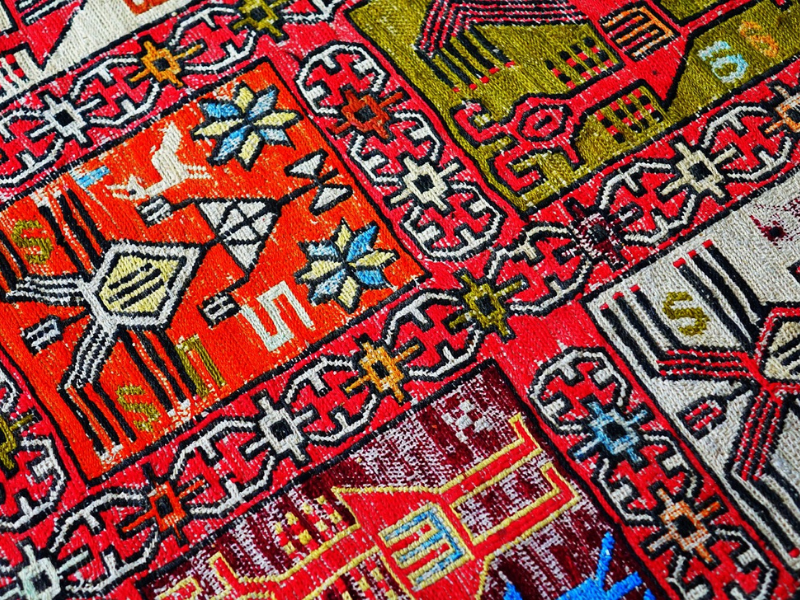
For more tips on choosing colors and patterns, visit our referral blog on Color Schemes and Patterns for Rugs.
5. Consider the Rug’s Function
The function of the rug plays a crucial role in determining the best type for your space. Consider the following factors based on the room’s function:
Living Room:
- Comfort: Choose a soft and plush rug for added comfort underfoot.
- Durability: Opt for a durable material like wool or synthetic fibers to withstand high traffic.
Dining Room:
- Stain Resistance: Choose a rug that is easy to clean and stain-resistant, as spills are common in dining areas.
- Size: Ensure the rug is large enough to accommodate the dining table and chairs.
Bedroom:
- Comfort: Choose a soft and cozy rug for added comfort when stepping out of bed.
- Placement: Consider placing the rug under the bed or using runners on each side.
Entryway:
- Durability: Opt for a durable material like sisal or synthetic fibers to withstand high traffic.
- Easy Maintenance: Choose a rug that is easy to clean, as entryways are prone to dirt and moisture.
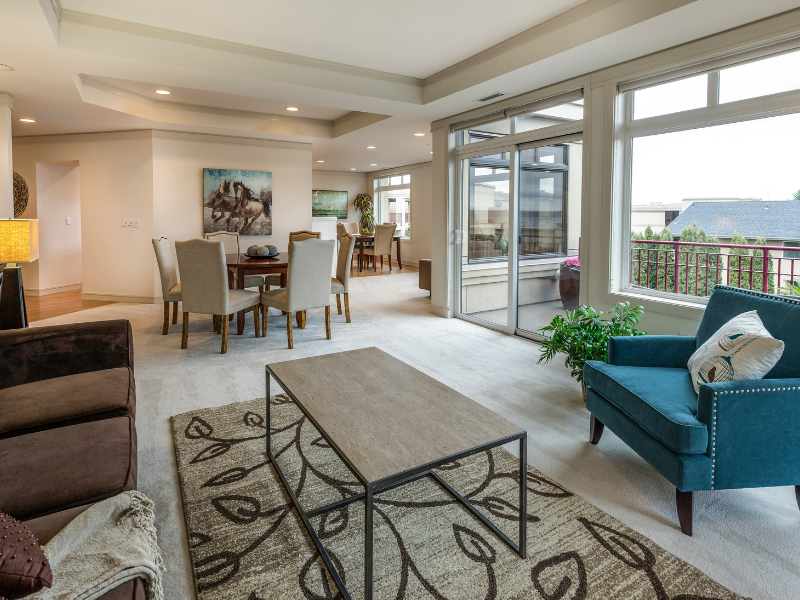
6. Think About Rug Placement
The placement of the rug can significantly impact the overall look and functionality of the room. Here are some placement tips for different spaces:
Living Room:
- All Furniture on the Rug: Place all furniture legs on the rug to create a cohesive and defined seating area.
- Front Legs on the Rug: Place the front legs of the sofa and chairs on the rug, with the back legs off, to create a connected but not fully enclosed space.
- Accent Rug: Use a smaller rug as an accent piece in front of the sofa or under a coffee table.
Dining Room:
- Place the rug under the dining table, ensuring it is large enough to accommodate the table and chairs, even when the chairs are pulled out.
Bedroom:
- Place the rug under the bed, extending at least 18-24 inches beyond the bed on all sides.
- Alternatively, use runners on each side of the bed for added comfort.
Entryway:
- Place the rug in the center of the entryway, leaving a few inches of space between the rug and the walls.
- Ensure the rug is large enough to accommodate foot traffic and prevent slipping.
For more ideas on rug placement, check out our post on Optimal Rug Placement Techniques.
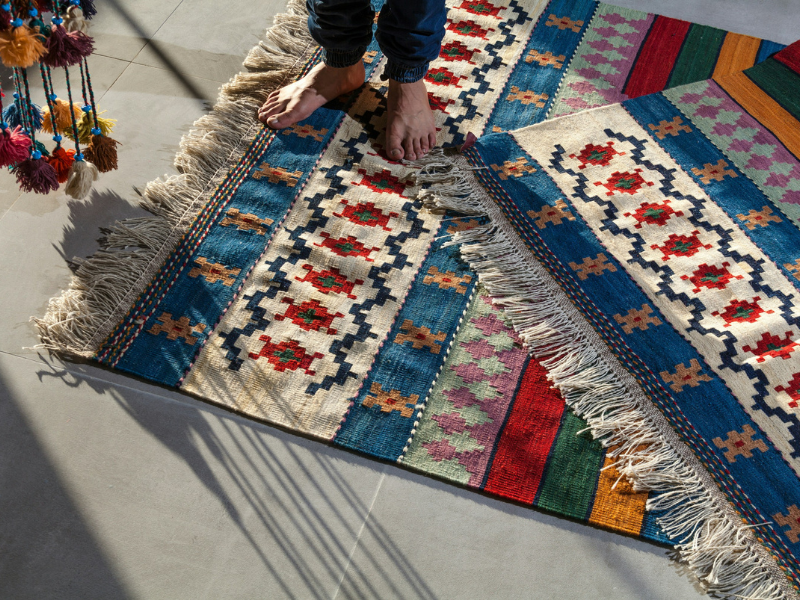
7. Consider Rug Maintenance
The maintenance requirements of the rug should align with your lifestyle and preferences. Here are some tips for maintaining different types of rugs:
Wool Rugs:
- Vacuuming: Regularly vacuum the rug to remove dirt and debris.
- Spot Cleaning: Blot spills immediately with a clean cloth and use a mild detergent for spot cleaning.
- Professional Cleaning: Periodically have the rug professionally cleaned to maintain its appearance and longevity.
Cotton Rugs:
- Machine Washing: Many cotton rugs are machine washable, making them easy to clean.
- Vacuuming: Regularly vacuum the rug to remove dirt and debris.
- Spot Cleaning: Blot spills immediately with a clean cloth and use a mild detergent for spot cleaning.
Synthetic Rugs:
- Vacuuming: Regularly vacuum the rug to remove dirt and debris.
- Spot Cleaning: Blot spills immediately with a clean cloth and use a mild detergent for spot cleaning.
- Professional Cleaning: Periodically have the rug professionally cleaned to maintain its appearance and longevity.
Jute and Sisal Rugs:
- Vacuuming: Regularly vacuum the rug to remove dirt and debris.
- Blotting: Blot spills immediately with a clean cloth. Avoid using excessive water, as natural fibers can absorb moisture and become damaged.
- Dry Cleaning: Consider professional dry cleaning for deep cleaning.
Silk Rugs:
- Vacuuming: Gently vacuum the rug to remove dirt and debris.
- Professional Cleaning: Silk rugs require professional cleaning to maintain their delicate fibers and appearance.
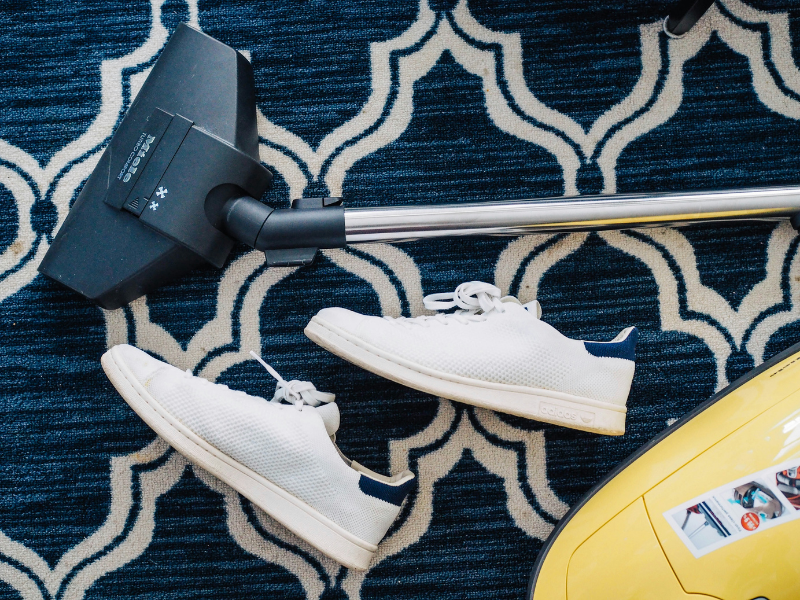
For more details on rug maintenance, visit our blog on Rug Care and Maintenance Tips.
8. Set a Budget
Rugs come in a wide range of prices, so it’s essential to set a budget before making a purchase. Consider the following factors when setting your budget:
Material:
- High-quality materials like wool and silk are more expensive but offer better durability and aesthetics.
- Synthetic and cotton rugs are more affordable and still offer good durability and style.
Size:
- Larger rugs are more expensive than smaller rugs. Consider the size of the rug needed for your space and set your budget accordingly.
Construction:
- Hand-knotted and hand-tufted rugs are more expensive due to the labor-intensive process.
- Machine-made rugs are more affordable and still offer good quality and design.
Brand and Design:
- Designer and branded rugs tend to be more expensive. Consider whether the brand and design are essential factors for your purchase.

9. Explore Different Rug Shapes
While rectangular rugs are the most common, there are other shapes to consider based on the layout and design of your room:
Rectangular Rugs:
- The most versatile and commonly used rug shape.
- Works well in various settings, including living rooms, dining rooms, and bedrooms.
Round Rugs:
- Adds a unique and playful touch to the room.
- Works well in smaller spaces, entryways, and under round dining tables.
Square Rugs:
- Provides a balanced and symmetrical look.
- Works well in square-shaped rooms and under square dining tables.
Runner Rugs:
- Long and narrow rugs that work well in hallways, entryways, and alongside beds.
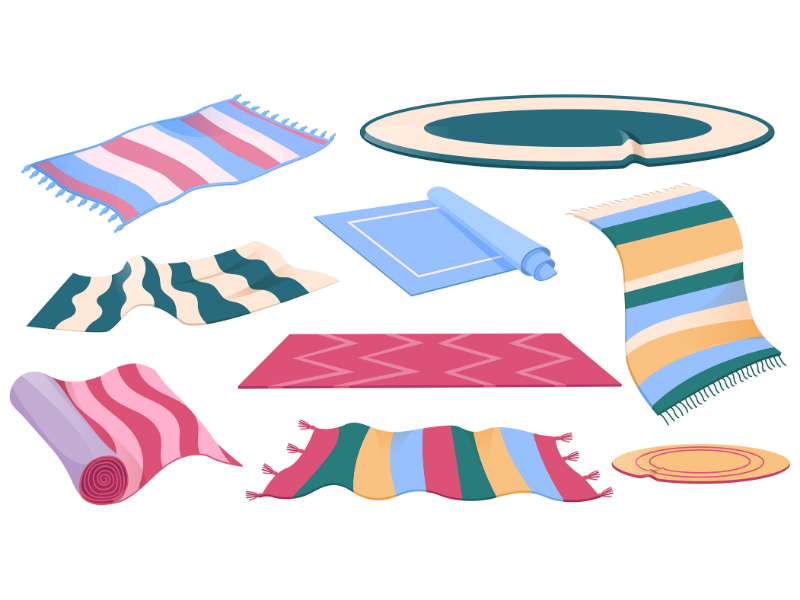
For more information on rug shapes, visit our referral blog on Exploring Rug Shapes for Every Room.
10. Think About Layering Rugs
Layering rugs is a popular design trend that adds depth, texture, and visual interest to your space. Here are some tips for layering rugs:
Mix Patterns and Textures:
- Combine different patterns and textures to create a dynamic and eclectic look.
- For example, layer a patterned rug over a solid rug or a shag rug over a flatweave rug.
Use Contrasting Colors:
- Layer rugs with contrasting colors to create a bold and striking look.
- For example, layer a dark-colored rug over a light-colored rug or vice versa.
Vary Sizes:
- Use rugs of different sizes to create a layered effect.
- For example, place a smaller rug on top of a larger rug to create a focal point.
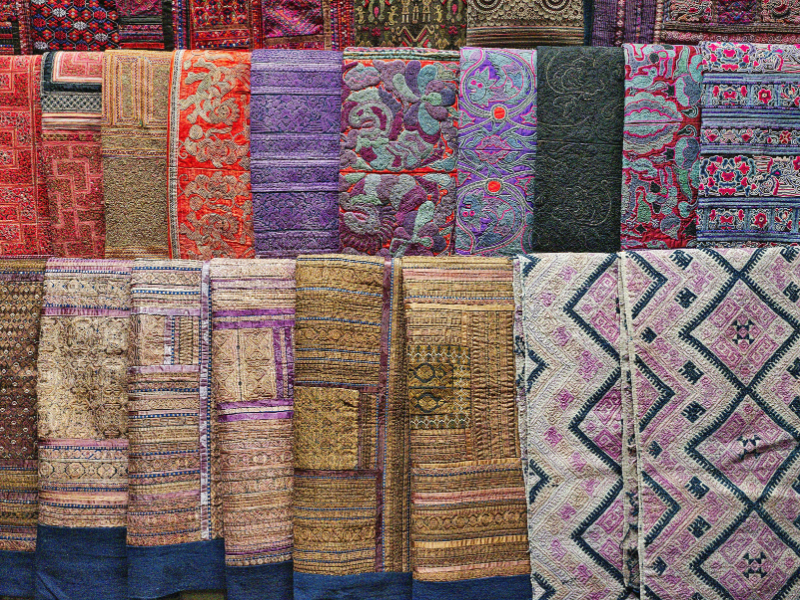
For more layering ideas, visit our referral blog on Layering Area Rugs: Tips and Tricks.
Conclusion
Choosing the perfect area rug for your space involves careful consideration of size, material, style, color, pattern, function, placement, maintenance, budget, and shape. By following the guidelines outlined in this comprehensive guide, you can find the ideal rug that enhances the aesthetics, comfort, and functionality of your room. Whether you prefer a traditional, modern, bohemian, or transitional style, the right area rug can transform your space and create a beautiful and inviting atmosphere. Happy rug shopping!
For more design inspiration and tips, explore our blog at Best Interior Design.
